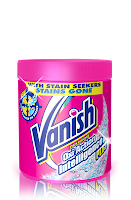Zappos.com is an online retailer of fashion accessories predominantly shoes. The retailer is famous for its focus on customers. The key factor behind the stupendous success of Zappos.com is their customer service culture. The company is passionate about their customers and the culture of putting customer first runs through the entire company. The entire business model of this company is centred on customers and the CEO is the driving force behind this customer oriented culture. The company has a warehouse that is open 24X7 so a customer who orders at 11 PM gets a next day delivery. The company also has a 365 day return policy where a customer, if he is not satisfied, can return the product with in 365 days of purchase and get a refund.
Top Management Involvement
The quality of customer service is directly proportional to the involvement of senior leaders of the company. Although the actual execution of service is done at the lower levels of management strata, unless the senior leaders are held responsible for customer satisfaction, the process will not excel. But for that, customer service should be given its legitimate position in the management functions. In service firms it is natural that customer service is given its due importance. But in other companies there is no reference to customer service as a function.
When senior managers become involved in managing customer service and satisfaction, the function gets recognized in the organization. Priorities change and service does not become an irritant but a priority. Firms like Zappos.com,Ritz Carlton, Mitchells and Marriott thrive because of the intense involvement of top leadership in monitoring customer service. In firms like Zappos and Marriott, the CEOs take personal interest in customer service initiatives.
Employee Motivation
Although it may seem very basic to state that employee motivation is critical to any customer service initiative, many firms fail to practice this obvious dictum. Since the frontline employees are the implementers of customer service, it is absolutely essential that they are given the necessary authority and responsibility to handle any request from the customers. This perhaps will the main reason why consumers do not appreciate being serviced by call centre executives. These outsourced firms usually do not have any authority to solve the issues of customers.
Randy and his sister approached the store and was surprised when the store staff replaced the shakers for free and even apologized for not packing it correctly. The author then mentions that his family later went on to give more than $100,000 worth of business to Disney Land. The salt and pepper shaker was not worth more than $10 but the small gesture by the Disney Staff created goodwill that is worth millions.
Such customer service excellence will not happen unless the employees are intrinsically motivated. The motivation comes from the responsibility and the freedom that comes with the job. It is in this context that organisational culture becomes critical. While processes can make customer service error free, spontaneity can come only from individuals. Organizations should strive to bring that spontaneity into the customer service.
Another story about customer service spontaneity -
Bill Marriott , the Chairman and CEO of Marriott International, in his blog once narrated a story about an Associate who gave his pants to one of the guests . The guest who came for a business meeting found that he accidently packed his wife’s slacks instead of his own. He realized this only minutes before the meeting began. The chances of going to a store to buy one and making it to the meeting on time were minimal. One of the Marriott Associates noticed that he happened to be of the same size as the guest and offered him the pair of pants he was wearing. The pants were of perfect fit and the guest went to the meeting on time. The Associate managed with his extra casual pants till the grateful guest returned.
(source : http://www.blogs.marriott.com/search/default.asp?item=2358646).
It is not that companies today are not aware of these basics but the fact is that in pursuit of high growth, often these fundas take the backseat.


